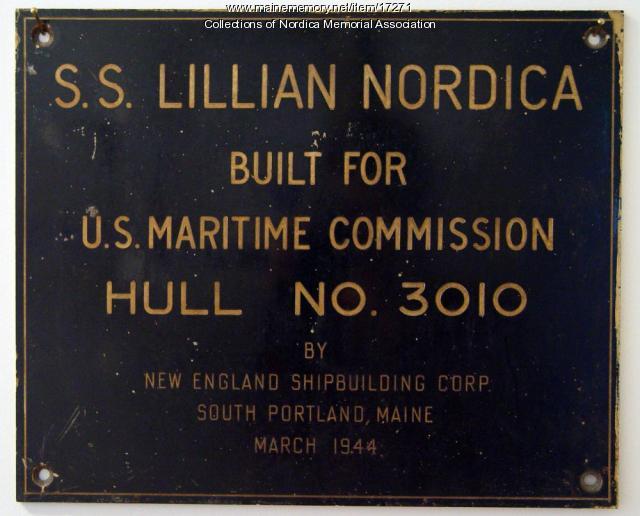Keywords: Baldwin
- Historical Items (292)
- Tax Records (1)
- Architecture & Landscape (1)
- Online Exhibits (14)
- Site Pages (3)
- My Maine Stories (1)
- Lesson Plans (0)
Online Exhibits
Your results include these online exhibits. You also can view all of the site's exhibits, view a timeline of selected events in Maine History, and learn how to create your own exhibit. See featured exhibits or create your own exhibit
Exhibit
The West Baldwin Methodist Church, founded in 1826, was one of three original churches in Baldwin. While its location has remained the same, the church has undergone numerous changes to serve the changing community.
Exhibit
Independence and Challenges: The Life of Hannah Pierce
Hannah Pierce (1788-1873) of West Baldwin, who remained single, was the educated daughter of a moderately wealthy landowner and businessman. She stayed at the family farm throughout her life, operating the farm and her various investments -- always in close touch with her siblings.
Exhibit
The novelty of organized auto racing came to Maine in 1911 with a hill-climbing event in Poland and speed racing at Old Orchard Beach. Drivers and cars came from all over New England for these events.
Exhibit
South Portland's Wartime Shipbuilding
Two shipyards in South Portland, built quickly in 1941 to construct cargo ships for the British and Americans, produced nearly 270 ships in two and a half years. Many of those vessels bore the names of notable Mainers.
Exhibit
Valentines Day cards have long been a way to express feelings of romance or love for family or friends. These early Valentines Day cards suggest the ways in which the expression of those sentiments has changed over time.
Exhibit
Imagery on letterhead soldiers used, on soldiers' memorials produced after the war, and on many other items captured the themes of the American Civil War: union, liberty, and freedom.
Exhibit
Memorializing Civil War Veterans: Portland & Westbrook
Three cemeteries -- all of which were in Westbrook during the Civil War -- contain headstones of Civil War soldiers. The inscriptions and embellishments on the stones offer insight into sentiments of the eras when the soldiers died.
Exhibit
Graduations -- and schools -- in the 19th through the first decade of the 20th century often were small affairs and sometimes featured student presentations that demonstrated what they had learned. They were not necessarily held in May or June, what later became the standard "end of the school year."
Exhibit
Lincoln County through the Eastern Eye
The Penobscot Marine Museum’s photography collections include nearly 50,000 glass plate negatives of images for "real photo" postcards produced by the Eastern Illustrating and Publishing Company of Belfast. This exhibit features postcards from Lincoln County.
Exhibit
Home Ties: Sebago During the Civil War
Letters to and from Sebago soldiers who served in the Civil War show concern on both sides about farms and other issues at home as well as concern from the home front about soldiers' well-being.
Exhibit
The history of the region now known as Maine did not begin at statehood in 1820. What was Maine before it was a state? How did Maine separate from Massachusetts? How has the Maine we experience today been shaped by thousands of years of history?
Exhibit
World War I and the Maine Experience
With a long history of patriotism and service, Maine experienced the war in a truly distinct way. Its individual experiences tell the story of not only what it means to be an American, but what it means to be from Maine during the war to end all wars.
Exhibit
Maine Eats: the food revolution starts here
From Maine's iconic lobsters, blueberries, potatoes, apples, and maple syrup, to local favorites like poutine, baked beans, red hot dogs, Italian sandwiches, and Whoopie Pies, Maine's identity and economy are inextricably linked to food. Sourcing food, preparing food, and eating food are all part of the heartbeat of Maine's culture and economy. Now, a food revolution is taking us back to our roots in Maine: to the traditional sources, preparation, and pleasures of eating food that have sustained Mainers for millennia.
Exhibit
Sagadahoc County through the Eastern Eye
The Eastern Illustrating and Publishing Company of Belfast, Maine. employed photographers who traveled by company vehicle through New England each summer, taking pictures of towns and cities, vacation spots and tourist attractions, working waterfronts and local industries, and other subjects postcard recipients might enjoy. The cards were printed by the millions in Belfast into the 1940s.














